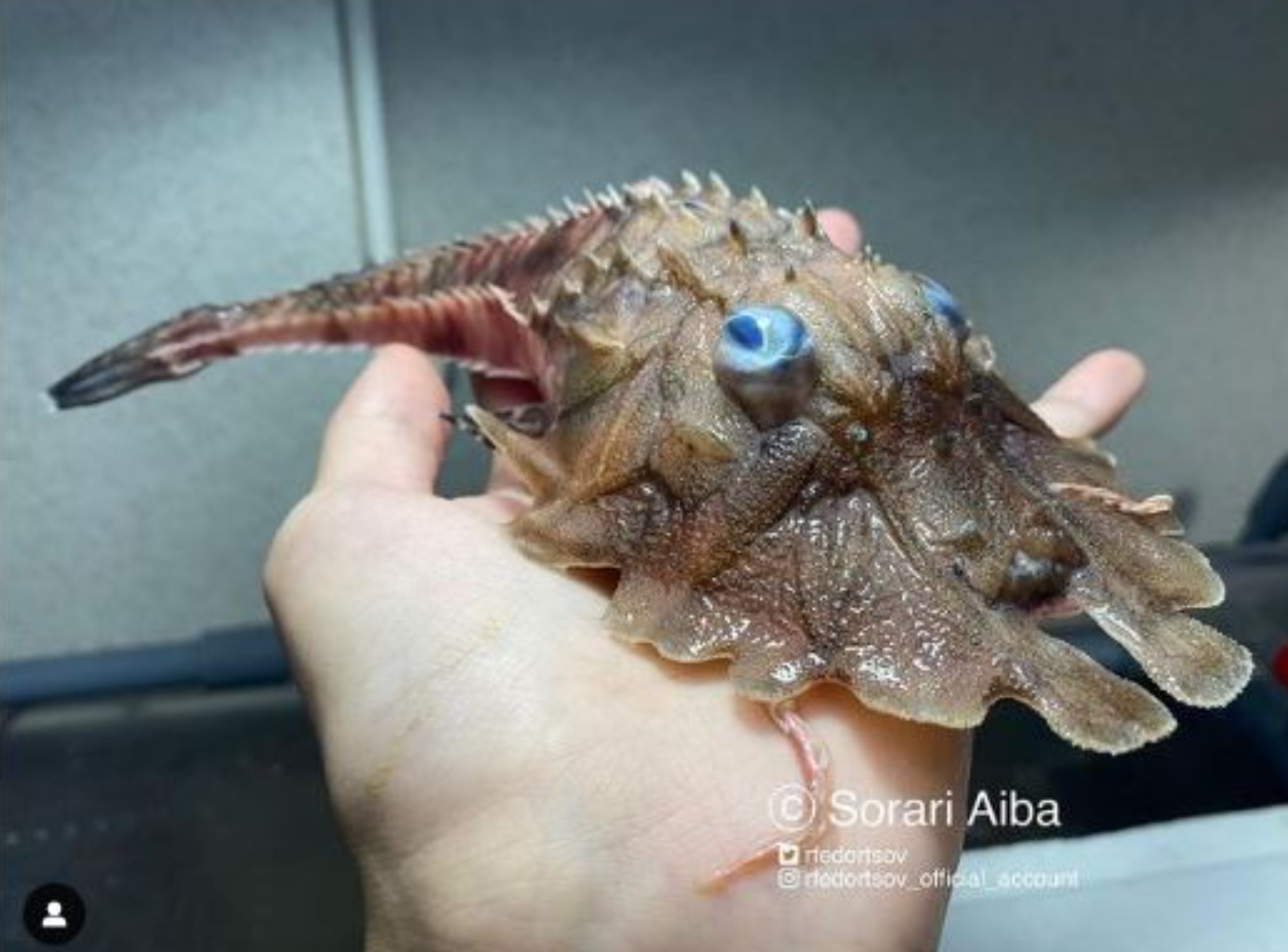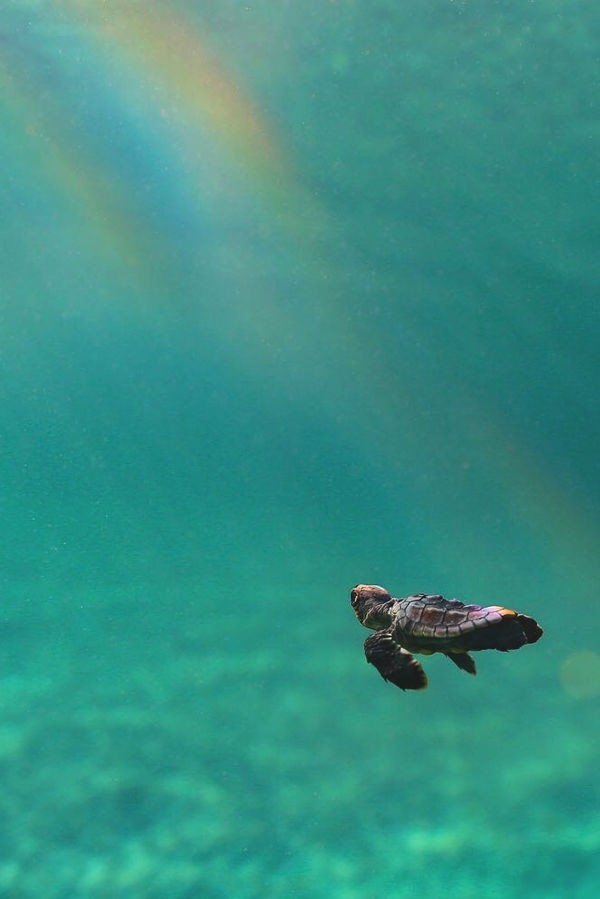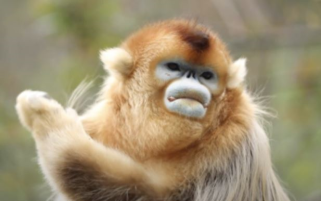It looks like you're using an Ad Blocker.
Please white-list or disable AboveTopSecret.com in your ad-blocking tool.
Thank you.
Some features of ATS will be disabled while you continue to use an ad-blocker.
share:
Enjoy some of the bizarre animals to be found in our world.

The maned wolf is a large canine of South America. Its markings resemble those of foxes, but it is neither a fox nor a wolf. It is the only species in the genus Chrysocyon (meaning "golden dog"). The maned wolf is a solitary animal. It communicates primarily by scent marking, but also gives a loud call known as "roar-barking".
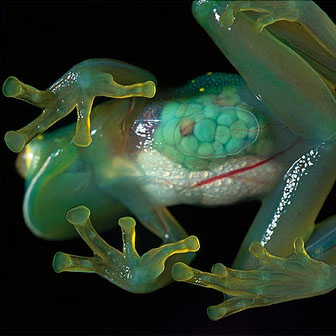
The glass frogs are frogs of the amphibian family Centrolenidae (order Anura). While the general background coloration of most glass frogs is primarily lime green, the abdominal skin of some members of this family is transparent and translucent. The internal viscera, including the heart, liver, and gastrointestinal tract, are visible through the skin, hence the common name is given as glass frog. Glass frogs are arboreal, meaning they mainly live in trees, and only come out for mating season.

A spitting cobra is any of several species of cobras that can defensively project venom from their fangs into the eyes of an attacker. The spat venom is generally harmless on intact mammalian skin (although contact can result in delayed blistering of the area), but can cause permanent blindness if introduced to the eye; if left untreated it may cause chemosis and corneal swelling.
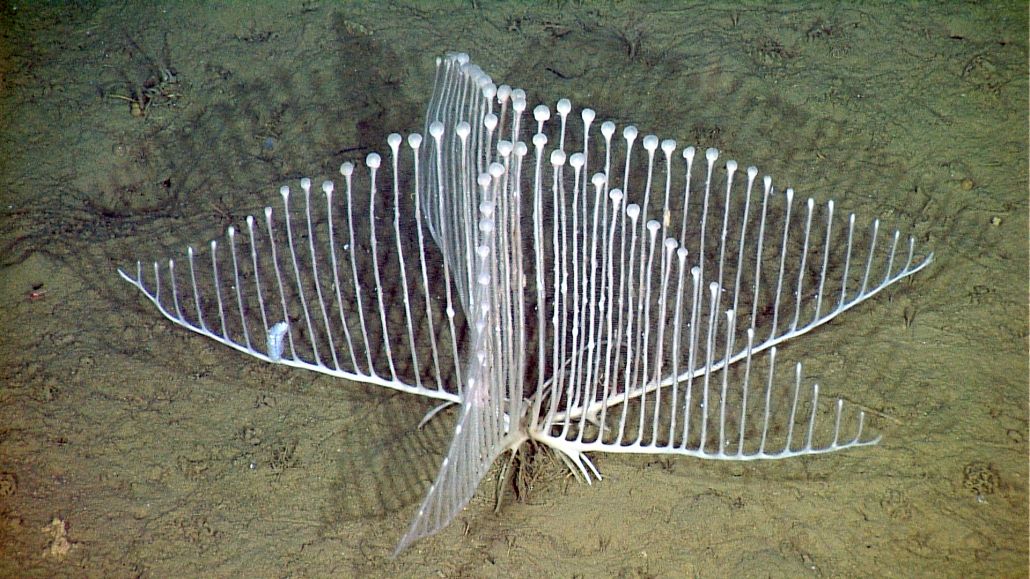
Harp sponge is a species of carnivorous deep-sea sponge first discovered off the Californian coast living at depths of 10,800–11,500 feet (3,300–3,500 m) by Welton L. Lee, Henry M Reiswig, William C. Austin, and Lonny Lundsten from the Monterey Bay Aquarium Research Institute (MBARI).
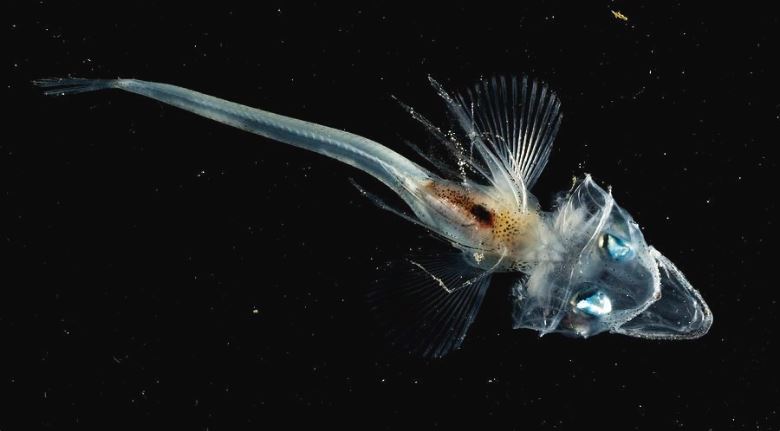
The crocodile icefish or white-blooded fish comprise a family (Channichthyidae) of notothenioid fishes found in the Southern Ocean around Antarctica. They are the only known vertebrates to lack hemoglobin in their blood as adults. Icefish populations are known to reside in the Atlantic and Indian sectors of the Southern Ocean, as well as the continental shelf waters surrounding Antarctica. All icefish are believed to be piscivorous, but can also feed on krill. Icefish are typically ambush predators; thus, they can survive long periods between feeding, and often consume fish up to 50% of their own body length. Maximum body lengths of 25–50 cm (9.8–19.7 in) have been recorded in these species.
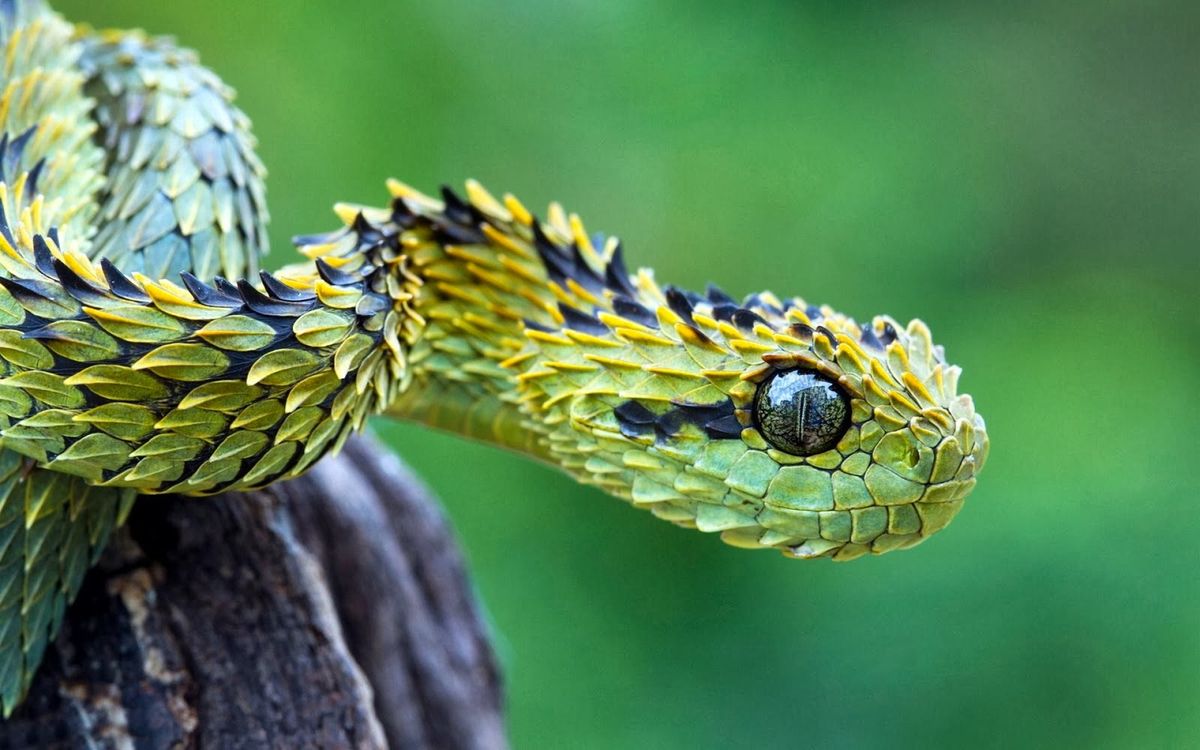
Bush vipers are found only in tropical subsaharan Africa (excluding southern Africa) and many species have isolated and fragmented distributions due to their confinement to rain forests. They are relatively small in size, with adults ranging in total length (body + tail) from 55 cm (22 in) for A. katangensis to a maximum of 78 cm (31 in) for A. squamigera.
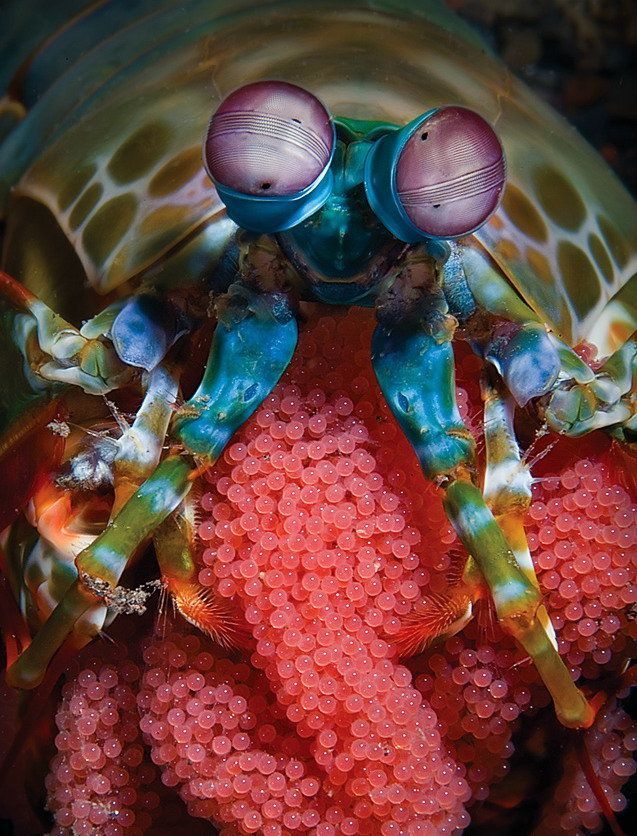
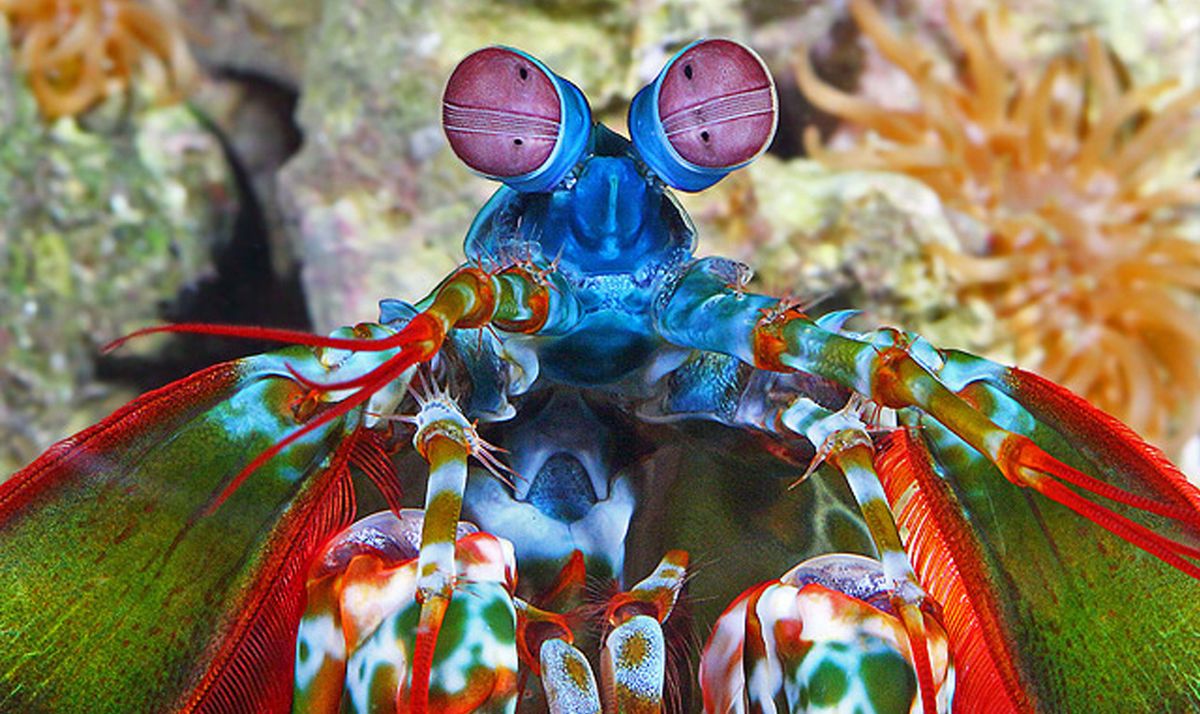
Mantis shrimp are carnivorous marine crustaceans of the order Stomatopoda, branching from other members of the class Malacostraca around 340 million years ago. Mantis shrimps typically grow to around 10 cm (3.9 in) in length, while a few can reach up to 38 cm (15 in).
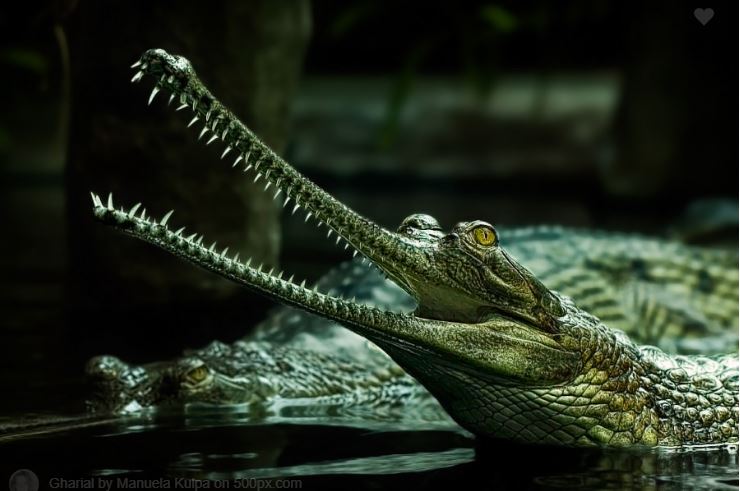
The gharial is a crocodilian in the family Gavialidae and among the longest of all living crocodilians. Mature females are 2.6–4.5 m (8 ft 6 in–14 ft 9 in) long, and males 3–6 m (9 ft 10 in–19 ft 8 in). Adult males have a distinct boss at the end of the snout, which resembles an earthenware pot known as a ghara, hence the name "gharial". The gharial is well adapted to catching fish because of its long, thin snout and 110 sharp, interlocking teeth.
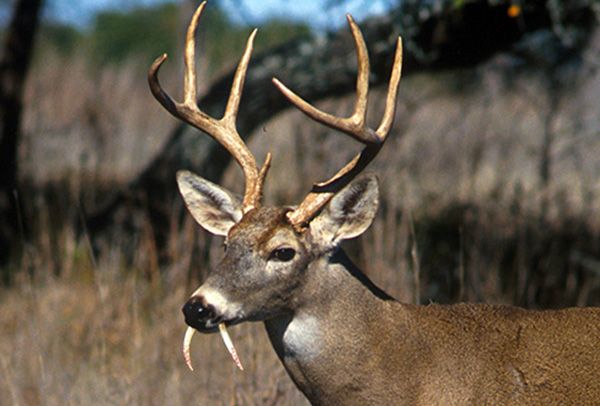
Vampire deer are a subspecies of water deer native to China and Korea.
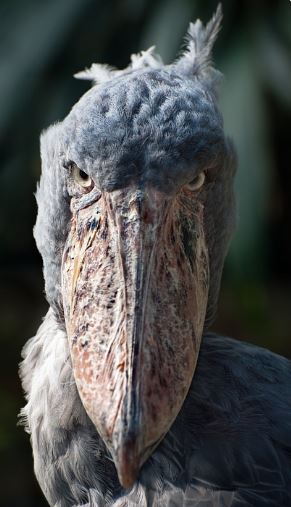
The shoebill (Balaeniceps rex) also known as whalehead, whale-headed stork, or shoe-billed stork, is a very large stork-like bird. It derives its name from its enormous shoe-shaped bill. It has a somewhat stork-like overall form and has previously been classified with the storks in the order Ciconiiformes based on this morphology. However, genetic evidence places it with pelicans and herons in the Pelecaniformes. The adult is mainly grey while the juveniles are browner. It lives in tropical east Africa in large swamps from South Sudan to Zambia.
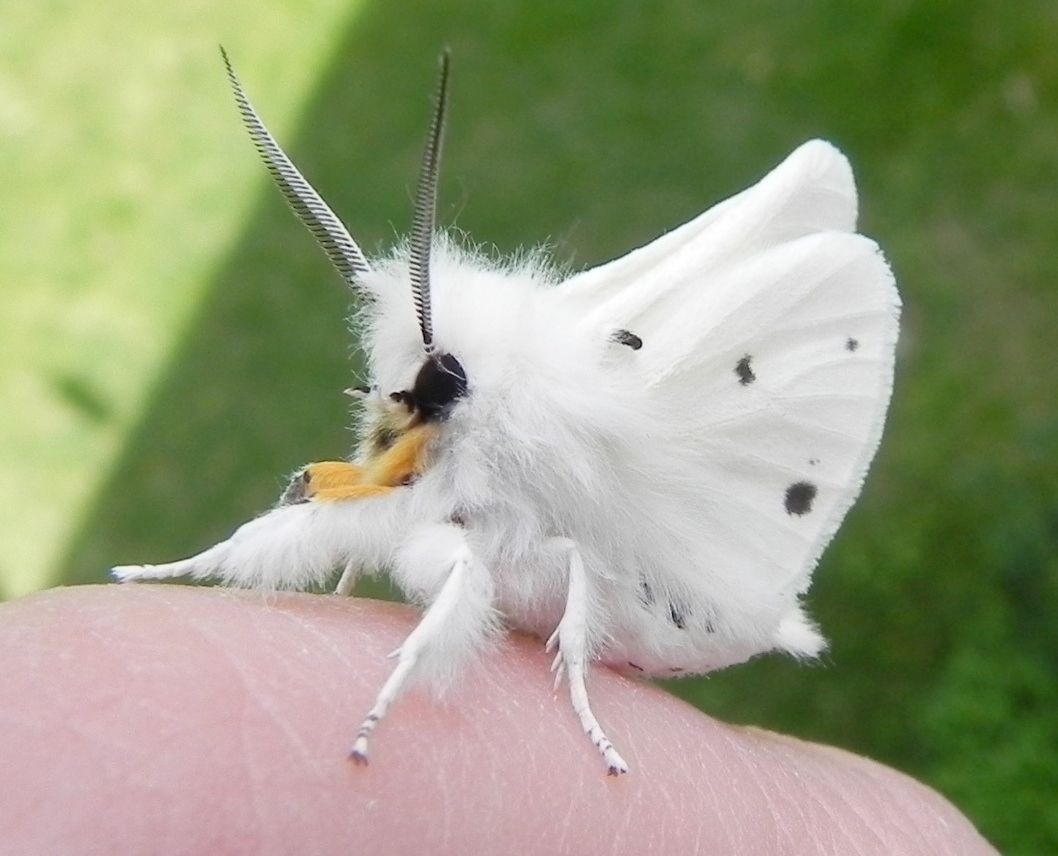
The Venezuelan poodle moth is an as-yet unidentified moth photographed in 2009 by Kyrgyzstani zoologist Dr. Arthur Anker in the Gran Sabana region of Venezuela.
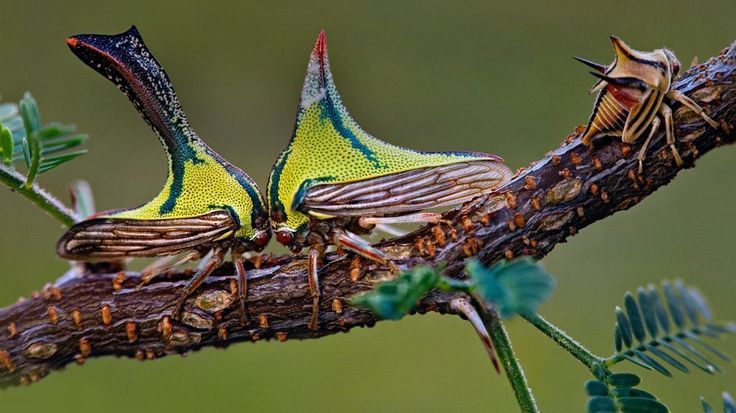
Thorn bugs is a group of insects related to the cicadas and the leafhoppers. About 3,200 species of treehoppers in over 400 genera are known. They are found on all continents except Antarctica; only five species are known from Europe. Individual treehoppers usually live for only a few months.
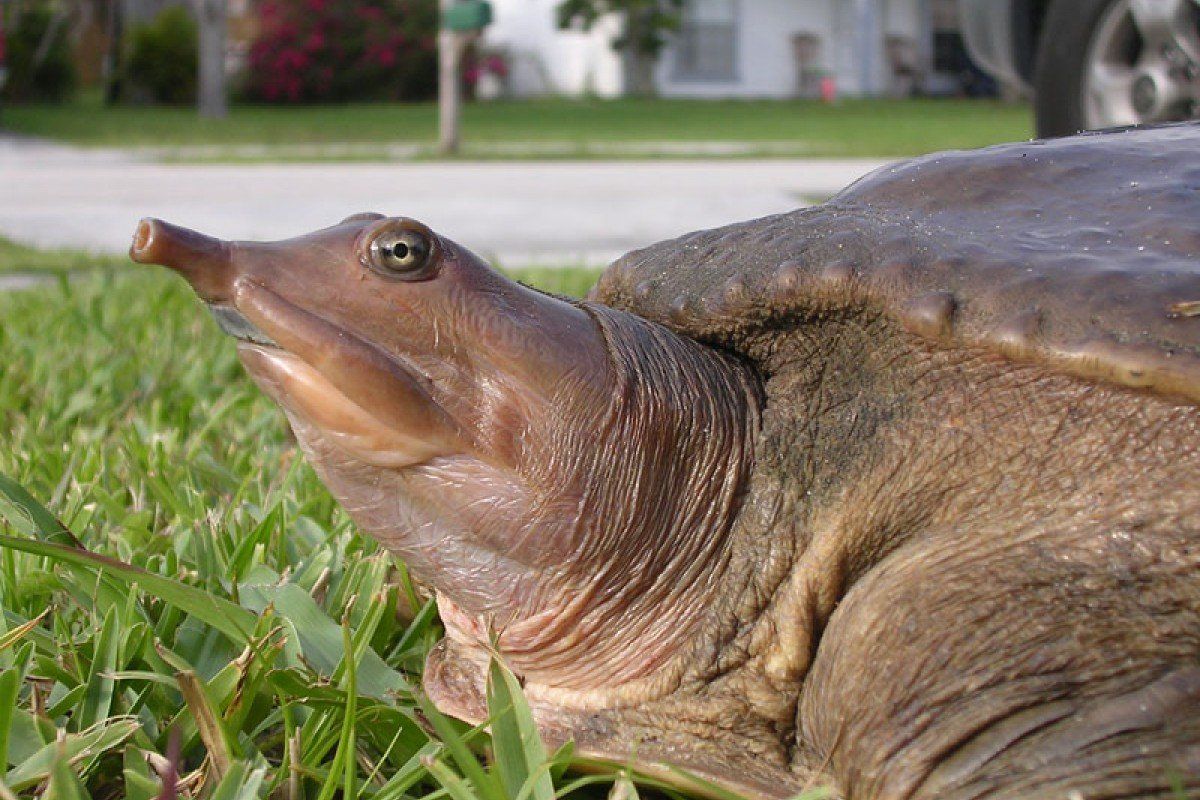
Softshell turtle include some of the world's largest freshwater turtles, though many can adapt to living in highly brackish areas. Members of this family occur in Africa, Asia, and North America, with extinct species known from Australia.
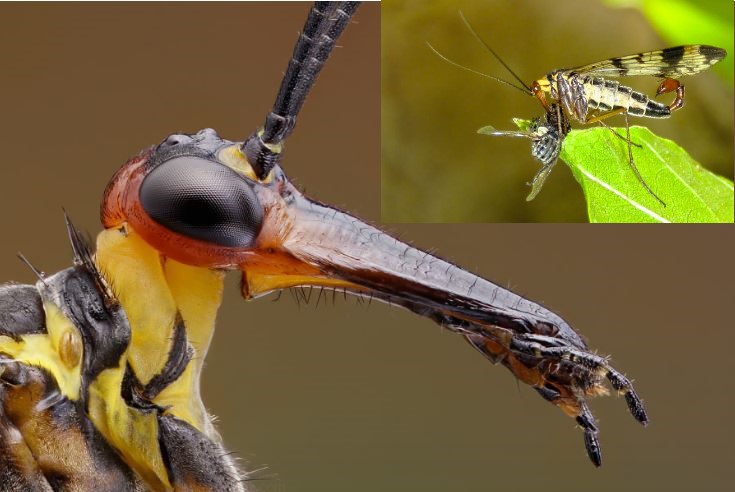
Mecoptera is an order of insects in the superorder Endopterygota with about six hundred species in nine families worldwide. Mecopterans are sometimes called scorpionflies after their largest family, Panorpidae, in which the males have enlarged genitals raised over the body that look similar to the stingers of scorpions, and long beaklike rostra.
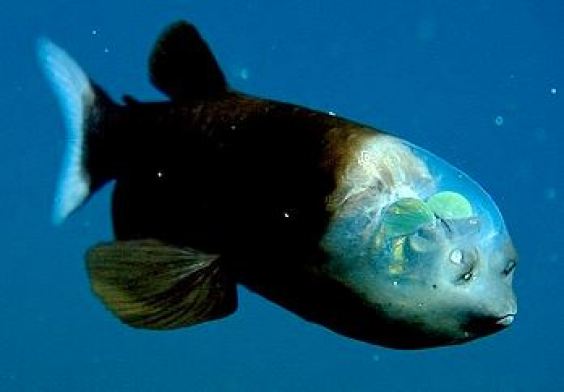
Barreleyes, also known as spook fish (a name also applied to several species of chimaera), are small deep-sea argentiniform fish comprising the family Opisthoproctidae found in tropical-to-temperate waters of the Atlantic, Pacific, and Indian Oceans.
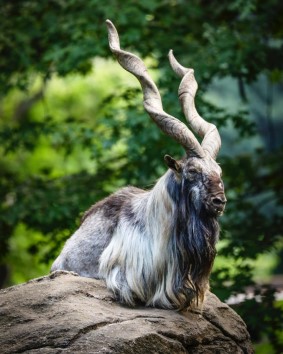
The markhor is the national animal of Pakistan, where it is also known as the screw horn or "screw-horned goat", mārkhor (مارخور) in Urdu from Classical Persian.
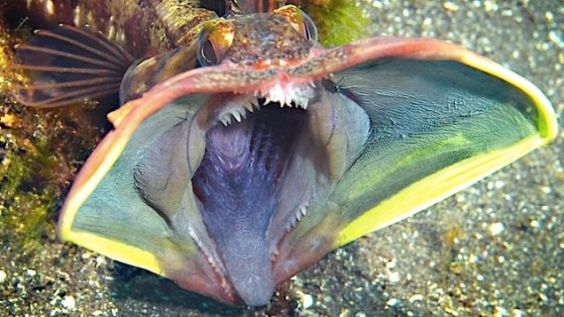
The sarcastic fringehead is a small but very hardy saltwater fish that has a large mouth and aggressive territorial behavior, for which it has been given its common name. When two fringeheads have a territorial battle, they wrestle by pressing their distended mouths against each other, as if they were kissing. This allows them to determine which is the larger fish, which establishes dominance. They can be up to 30 centimetres (12 in) long, elongate and slender, and are mostly scaleless with great pectoral fins and reduced pelvic fins. The swimming movements of these fish are complicated. Their swimming consists of short, fast, dart-like movements.
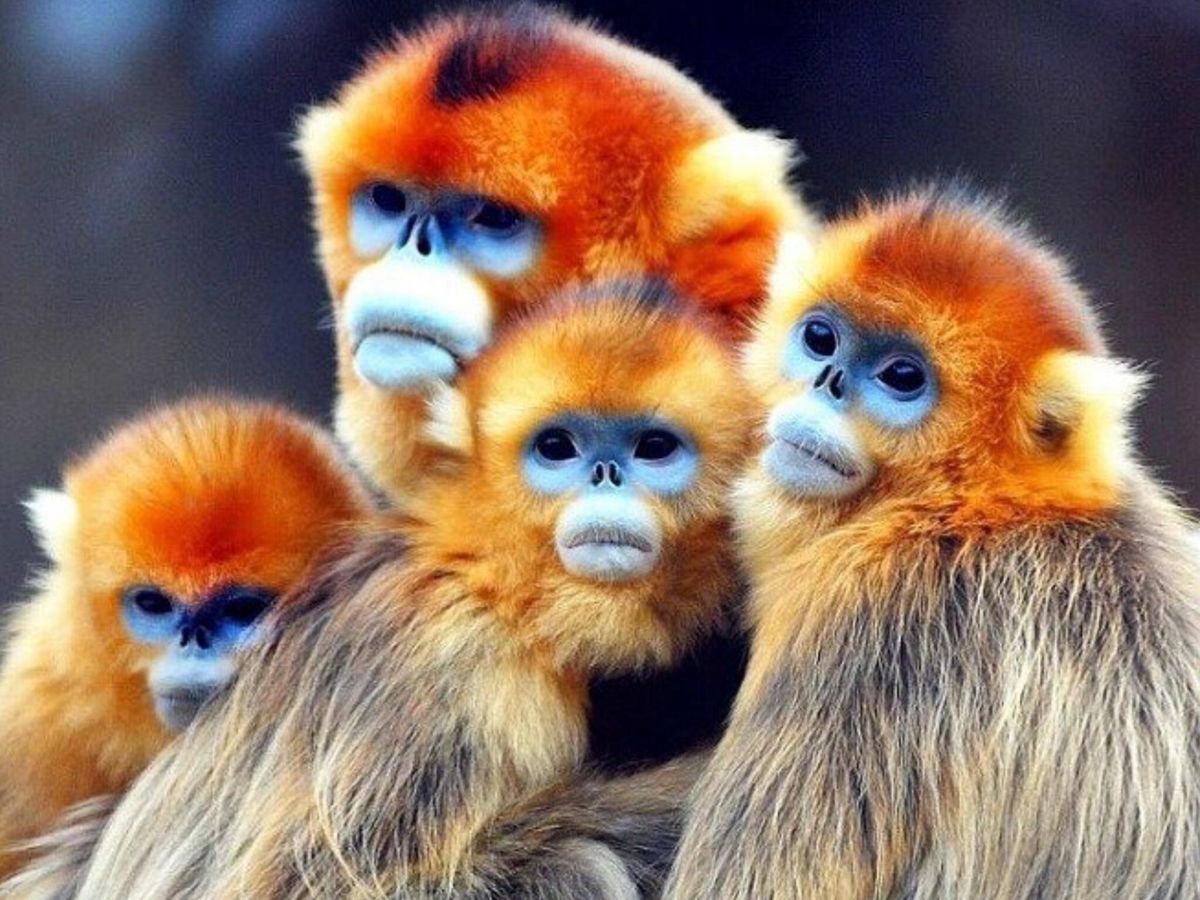
Snub-nosed monkeys are a group of Old World monkeys and make up the entirety of the genus Rhinopithecus. The genus is rare and not fully researched. Some taxonomists group snub-nosed monkeys together with the genus Pygathrix. Snub-nosed monkeys live in Asia, with a range covering southern China (especially Tibet, Sichuan, Yunnan, and Guizhou) extending into the northern parts of Myanmar and Vietnam.
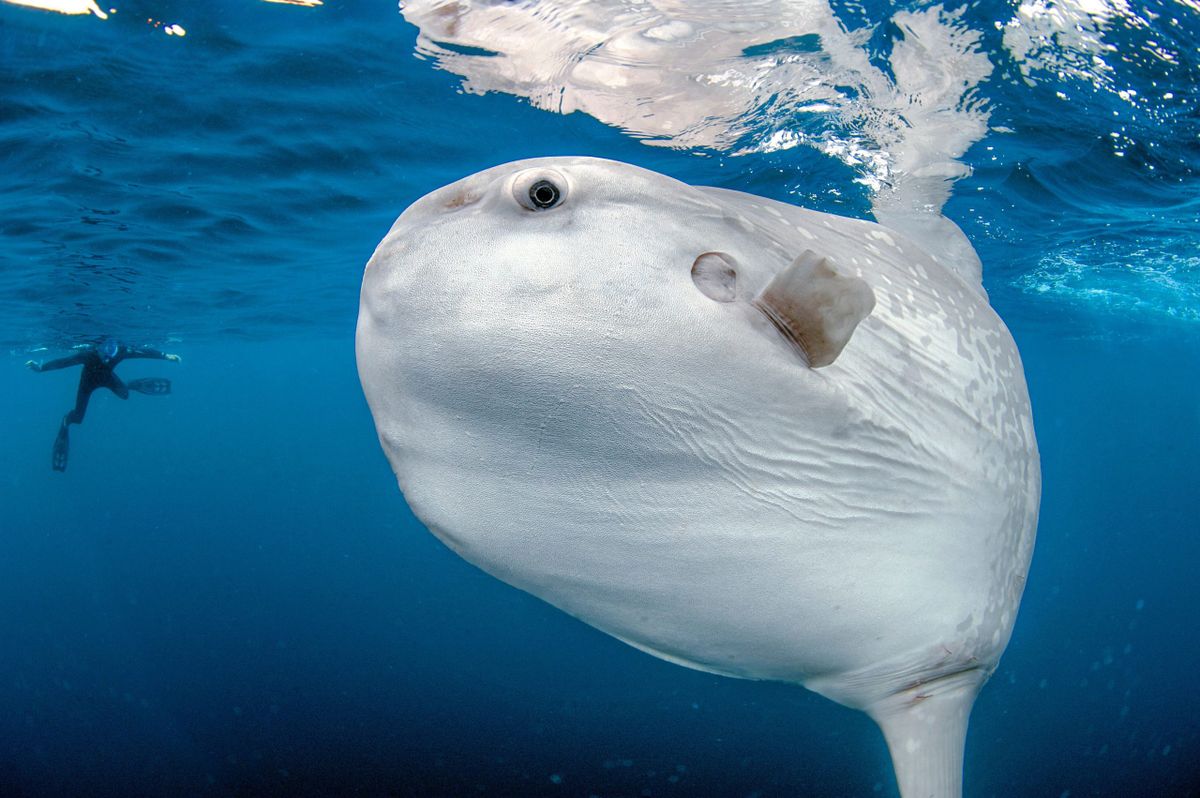
The ocean sunfish is one of the two heaviest known bony fish in the world, the other being the southern sunfish. Adults typically weigh between 247 and 2,000 kg (545 and 4,409 lb). The species is native to tropical and temperate waters around the world.

The maned wolf is a large canine of South America. Its markings resemble those of foxes, but it is neither a fox nor a wolf. It is the only species in the genus Chrysocyon (meaning "golden dog"). The maned wolf is a solitary animal. It communicates primarily by scent marking, but also gives a loud call known as "roar-barking".

The glass frogs are frogs of the amphibian family Centrolenidae (order Anura). While the general background coloration of most glass frogs is primarily lime green, the abdominal skin of some members of this family is transparent and translucent. The internal viscera, including the heart, liver, and gastrointestinal tract, are visible through the skin, hence the common name is given as glass frog. Glass frogs are arboreal, meaning they mainly live in trees, and only come out for mating season.

A spitting cobra is any of several species of cobras that can defensively project venom from their fangs into the eyes of an attacker. The spat venom is generally harmless on intact mammalian skin (although contact can result in delayed blistering of the area), but can cause permanent blindness if introduced to the eye; if left untreated it may cause chemosis and corneal swelling.

Harp sponge is a species of carnivorous deep-sea sponge first discovered off the Californian coast living at depths of 10,800–11,500 feet (3,300–3,500 m) by Welton L. Lee, Henry M Reiswig, William C. Austin, and Lonny Lundsten from the Monterey Bay Aquarium Research Institute (MBARI).

The crocodile icefish or white-blooded fish comprise a family (Channichthyidae) of notothenioid fishes found in the Southern Ocean around Antarctica. They are the only known vertebrates to lack hemoglobin in their blood as adults. Icefish populations are known to reside in the Atlantic and Indian sectors of the Southern Ocean, as well as the continental shelf waters surrounding Antarctica. All icefish are believed to be piscivorous, but can also feed on krill. Icefish are typically ambush predators; thus, they can survive long periods between feeding, and often consume fish up to 50% of their own body length. Maximum body lengths of 25–50 cm (9.8–19.7 in) have been recorded in these species.

Bush vipers are found only in tropical subsaharan Africa (excluding southern Africa) and many species have isolated and fragmented distributions due to their confinement to rain forests. They are relatively small in size, with adults ranging in total length (body + tail) from 55 cm (22 in) for A. katangensis to a maximum of 78 cm (31 in) for A. squamigera.


Mantis shrimp are carnivorous marine crustaceans of the order Stomatopoda, branching from other members of the class Malacostraca around 340 million years ago. Mantis shrimps typically grow to around 10 cm (3.9 in) in length, while a few can reach up to 38 cm (15 in).

The gharial is a crocodilian in the family Gavialidae and among the longest of all living crocodilians. Mature females are 2.6–4.5 m (8 ft 6 in–14 ft 9 in) long, and males 3–6 m (9 ft 10 in–19 ft 8 in). Adult males have a distinct boss at the end of the snout, which resembles an earthenware pot known as a ghara, hence the name "gharial". The gharial is well adapted to catching fish because of its long, thin snout and 110 sharp, interlocking teeth.

Vampire deer are a subspecies of water deer native to China and Korea.

The shoebill (Balaeniceps rex) also known as whalehead, whale-headed stork, or shoe-billed stork, is a very large stork-like bird. It derives its name from its enormous shoe-shaped bill. It has a somewhat stork-like overall form and has previously been classified with the storks in the order Ciconiiformes based on this morphology. However, genetic evidence places it with pelicans and herons in the Pelecaniformes. The adult is mainly grey while the juveniles are browner. It lives in tropical east Africa in large swamps from South Sudan to Zambia.

The Venezuelan poodle moth is an as-yet unidentified moth photographed in 2009 by Kyrgyzstani zoologist Dr. Arthur Anker in the Gran Sabana region of Venezuela.

Thorn bugs is a group of insects related to the cicadas and the leafhoppers. About 3,200 species of treehoppers in over 400 genera are known. They are found on all continents except Antarctica; only five species are known from Europe. Individual treehoppers usually live for only a few months.

Softshell turtle include some of the world's largest freshwater turtles, though many can adapt to living in highly brackish areas. Members of this family occur in Africa, Asia, and North America, with extinct species known from Australia.

Mecoptera is an order of insects in the superorder Endopterygota with about six hundred species in nine families worldwide. Mecopterans are sometimes called scorpionflies after their largest family, Panorpidae, in which the males have enlarged genitals raised over the body that look similar to the stingers of scorpions, and long beaklike rostra.

Barreleyes, also known as spook fish (a name also applied to several species of chimaera), are small deep-sea argentiniform fish comprising the family Opisthoproctidae found in tropical-to-temperate waters of the Atlantic, Pacific, and Indian Oceans.

The markhor is the national animal of Pakistan, where it is also known as the screw horn or "screw-horned goat", mārkhor (مارخور) in Urdu from Classical Persian.

The sarcastic fringehead is a small but very hardy saltwater fish that has a large mouth and aggressive territorial behavior, for which it has been given its common name. When two fringeheads have a territorial battle, they wrestle by pressing their distended mouths against each other, as if they were kissing. This allows them to determine which is the larger fish, which establishes dominance. They can be up to 30 centimetres (12 in) long, elongate and slender, and are mostly scaleless with great pectoral fins and reduced pelvic fins. The swimming movements of these fish are complicated. Their swimming consists of short, fast, dart-like movements.

Snub-nosed monkeys are a group of Old World monkeys and make up the entirety of the genus Rhinopithecus. The genus is rare and not fully researched. Some taxonomists group snub-nosed monkeys together with the genus Pygathrix. Snub-nosed monkeys live in Asia, with a range covering southern China (especially Tibet, Sichuan, Yunnan, and Guizhou) extending into the northern parts of Myanmar and Vietnam.

The ocean sunfish is one of the two heaviest known bony fish in the world, the other being the southern sunfish. Adults typically weigh between 247 and 2,000 kg (545 and 4,409 lb). The species is native to tropical and temperate waters around the world.
Continued...
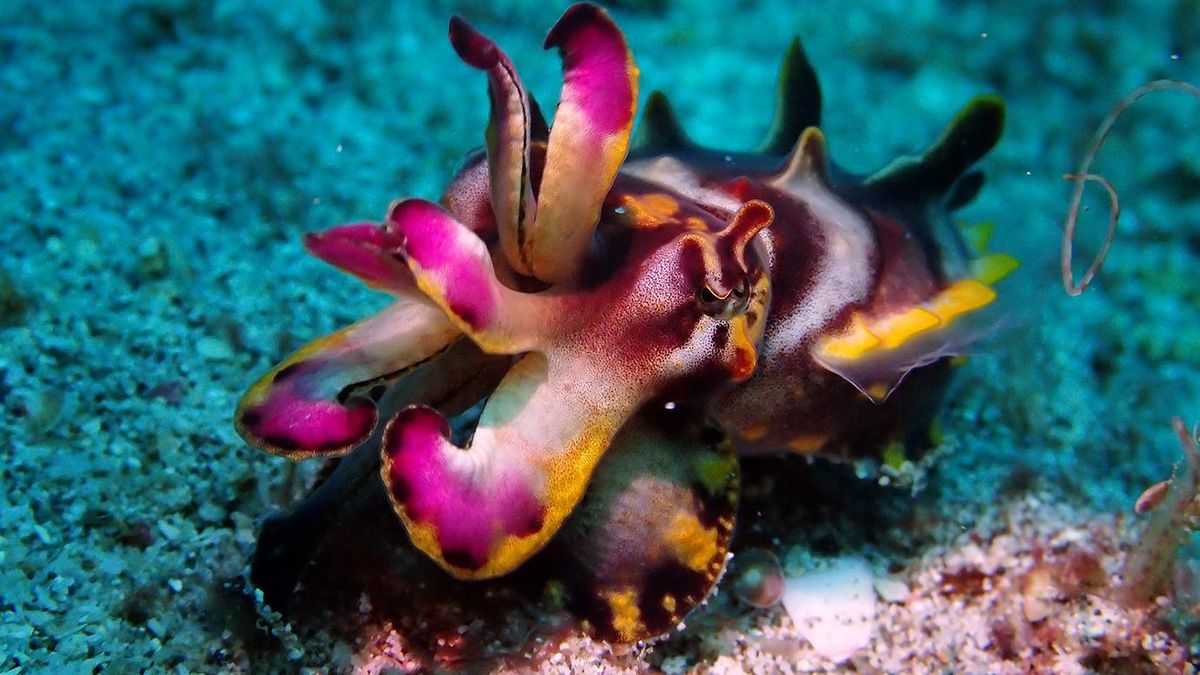
The flamboyant cuttlefish is a species of cuttlefish occurring in tropical Indo-Pacific waters off northern Australia, southern New Guinea, as well as numerous islands of the Philippines, Indonesia and Malaysia. The flamboyant cuttlefish has been recorded from sand and mud substrate in shallow waters at depths of 3 to 86 m. The species is active during the day and has been observed hunting fish and crustaceans. It employs complex and varied camouflage to stalk its prey. The normal base color of this species is dark brown. Individuals that are disturbed or attacked quickly change colour to a pattern of black, dark brown, white, with yellow patches around the mantle, arms, and eyes. The arm tips often display bright red coloration to ward off would-be predators. Animals displaying this colour pattern have been observed using their lower arms to walk or "amble" along the sea floor while rhythmically waving the wide protective membranes on their arms. This behavior advertises a poisonous nature: The flesh of this cuttlefish contains a unique toxin.
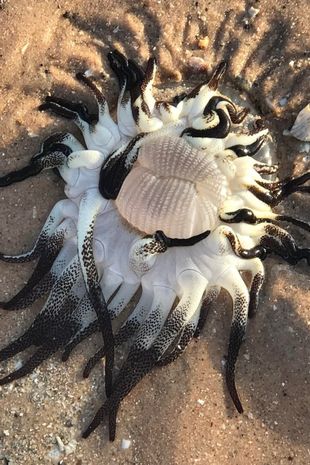
An unidentified species was discovered in Australia.
Finally, pictures from Russian deep-sea fisherman Roman Fedortsov of newly and recently discovered species:
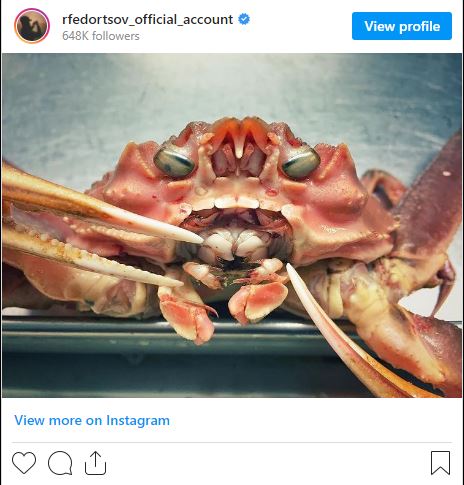
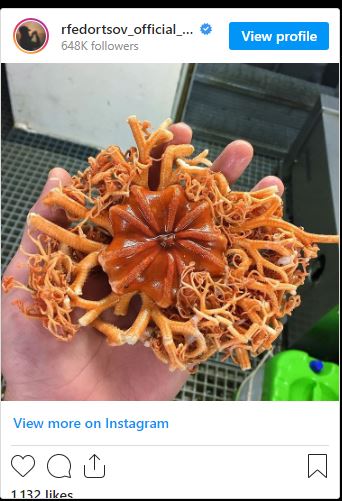
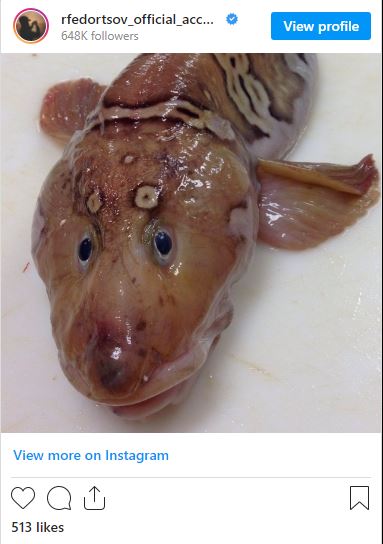
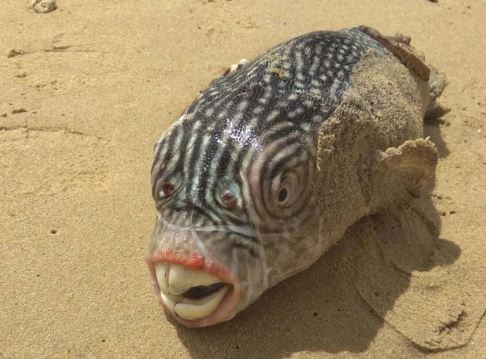

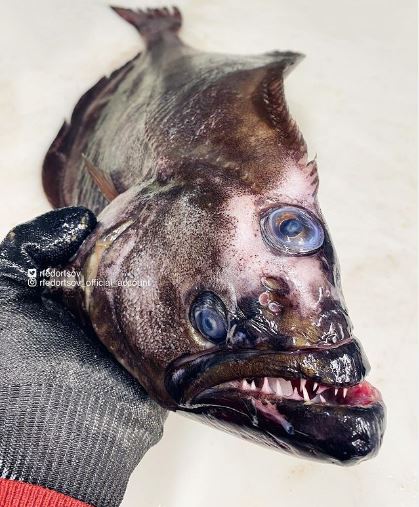
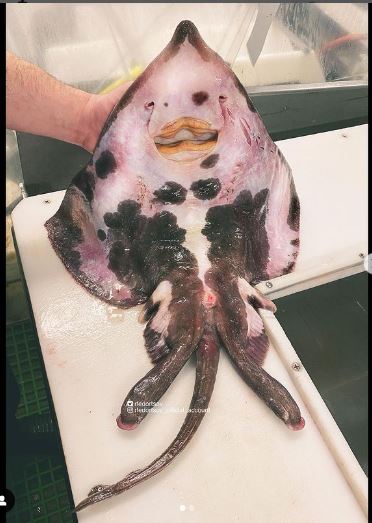
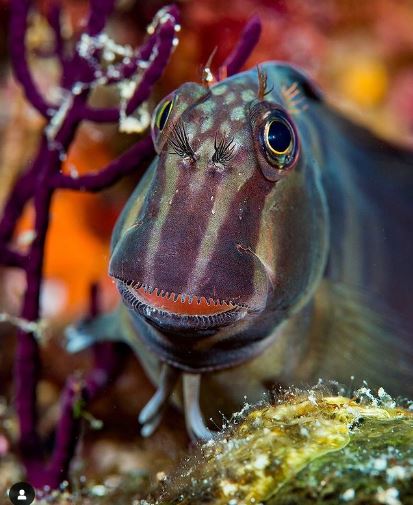
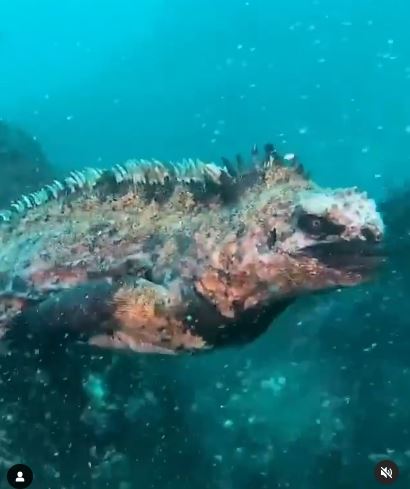
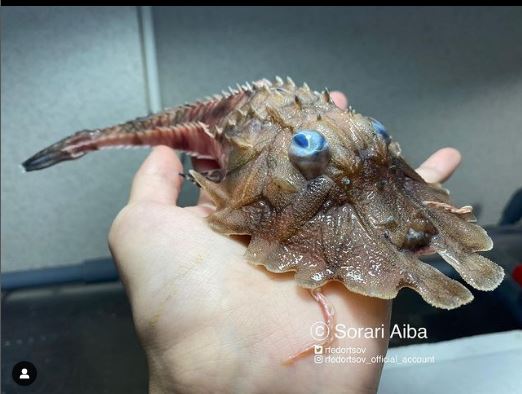
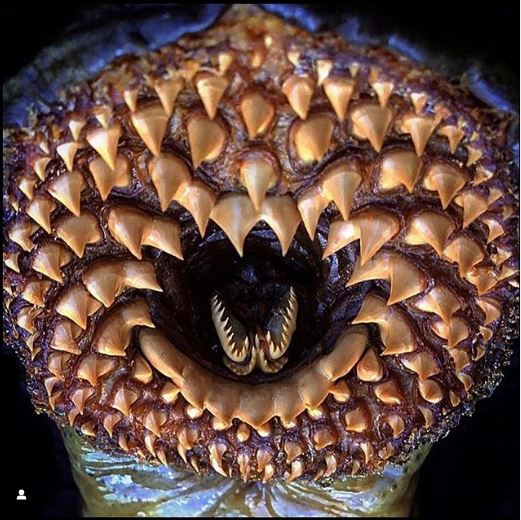
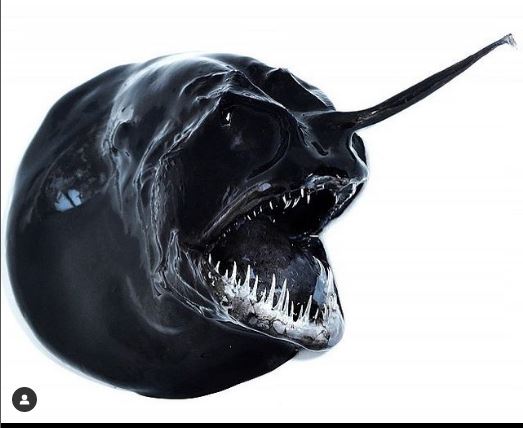
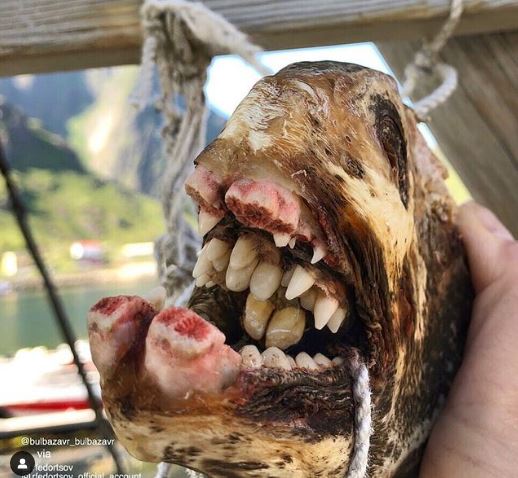
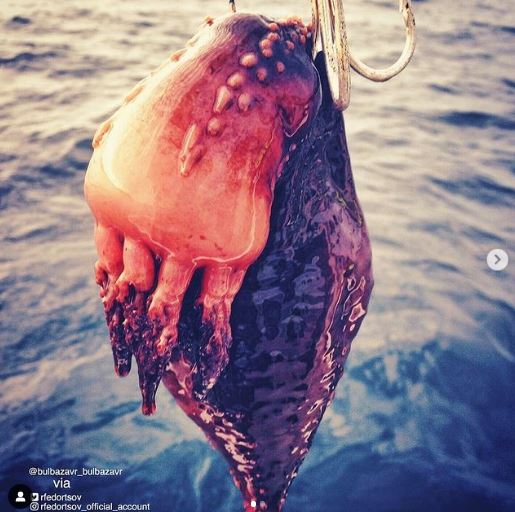
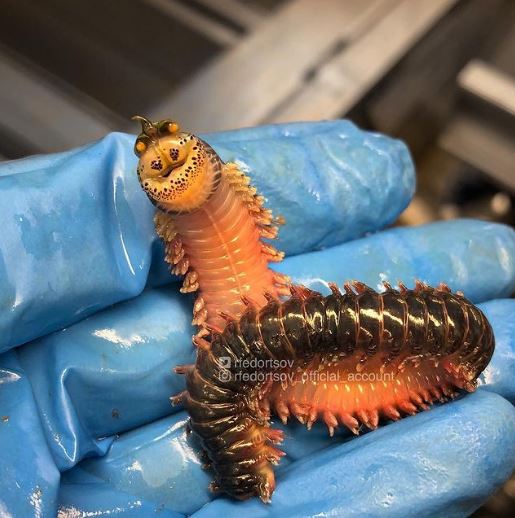
www.ctvnews.ca...
His Instagram: www.instagram.com...

The flamboyant cuttlefish is a species of cuttlefish occurring in tropical Indo-Pacific waters off northern Australia, southern New Guinea, as well as numerous islands of the Philippines, Indonesia and Malaysia. The flamboyant cuttlefish has been recorded from sand and mud substrate in shallow waters at depths of 3 to 86 m. The species is active during the day and has been observed hunting fish and crustaceans. It employs complex and varied camouflage to stalk its prey. The normal base color of this species is dark brown. Individuals that are disturbed or attacked quickly change colour to a pattern of black, dark brown, white, with yellow patches around the mantle, arms, and eyes. The arm tips often display bright red coloration to ward off would-be predators. Animals displaying this colour pattern have been observed using their lower arms to walk or "amble" along the sea floor while rhythmically waving the wide protective membranes on their arms. This behavior advertises a poisonous nature: The flesh of this cuttlefish contains a unique toxin.

An unidentified species was discovered in Australia.
A bizarre sea creature that washed up on a beach in Australia has baffled locals and internet users, including some who thought it looked like an alien.
The mysterious being was found on a beach in Broome, on Western Australia's Indian Ocean coastline, according to a Reddit user who posted a photo of it.
The puzzled Redditor said it was discovered by his mum and girlfriend while they were out for a walk, and he asked fellow users to identify it.
Finally, pictures from Russian deep-sea fisherman Roman Fedortsov of newly and recently discovered species:















A Russian fisherman has gained more than half a million followers on Instagram by sharing photos of weird and wonderful sea creatures hauled from the depths.
Roman Fedortsov from Murmansk, a port city in northern Russia, has been posting his deep-sea discoveries to Twitter and Instagram since 2016.
www.ctvnews.ca...
His Instagram: www.instagram.com...
Nature is full of strange stuff. I actually knew about a decent number of the ones you mentioned.
How did you miss these?
Surinam toad:
These guys give birth like we pop zits. The eggs develop under the skin. It's horror movie grade.
Mouthbrooding fish:
You may or may not know about mouthbrooding fish. It's a strategy of parental care developed by cichlids especially in the African rift lakes. You can see this behavior for yourself if you keep aquarium fish and do a decent job of it. However, the strategy is varied. There are some fish that practice bi-parental care. Goby cichlids in Tanganyika will do this. The female will start the brood with the parents transferring eggs/fry halfway through, and the male finishes care. There are also mouthbrooding parasites sort of like the cuckoo is to birds. These are small catfishes - Synodontis species. They interfere with the spawning of the parents depositing their own eggs in the process. The female picks up the eggs and the catfish fry hatch earlier to a ready made meal of the unhatched cichlid eggs or smaller fry. When the female releases the offspring, she releases baby catfish, not her own brood! This behavior is also possible to be observed in the home, but it's much harder to coordinate since you need a setup with two species maintained well enough to spawn for you.
How did you miss these?
Surinam toad:
These guys give birth like we pop zits. The eggs develop under the skin. It's horror movie grade.
Mouthbrooding fish:
You may or may not know about mouthbrooding fish. It's a strategy of parental care developed by cichlids especially in the African rift lakes. You can see this behavior for yourself if you keep aquarium fish and do a decent job of it. However, the strategy is varied. There are some fish that practice bi-parental care. Goby cichlids in Tanganyika will do this. The female will start the brood with the parents transferring eggs/fry halfway through, and the male finishes care. There are also mouthbrooding parasites sort of like the cuckoo is to birds. These are small catfishes - Synodontis species. They interfere with the spawning of the parents depositing their own eggs in the process. The female picks up the eggs and the catfish fry hatch earlier to a ready made meal of the unhatched cichlid eggs or smaller fry. When the female releases the offspring, she releases baby catfish, not her own brood! This behavior is also possible to be observed in the home, but it's much harder to coordinate since you need a setup with two species maintained well enough to spawn for you.
a reply to: LoneCloudHopper2
Wonderful, wonderful, Thank you!
A quick video of the noise the Shoebill makes.
www.youtube.com...
Wonderful, wonderful, Thank you!
A quick video of the noise the Shoebill makes.
www.youtube.com...
What a great montage! Certainly more enjoyable than the latest news- especially the snub nosed monkey; I wouldn't mind befriending a few of those
little cuties!
The last compilation of pictures is going to give me nightmares, though....
The last compilation of pictures is going to give me nightmares, though....
a reply to: LoneCloudHopper2
Thanks for all of the wonderful pictures, and needed distraction.
Most seem to think if any supposed alien arrives, that it will look humanoid.
Wonder how a superior species would be received, if they looked like some of these creatures, that many might call monsters ?
Thanks for all of the wonderful pictures, and needed distraction.
Most seem to think if any supposed alien arrives, that it will look humanoid.
Wonder how a superior species would be received, if they looked like some of these creatures, that many might call monsters ?
originally posted by: BelleEpoque
a reply to: LoneCloudHopper2
Wonderful, wonderful, Thank you!
A quick video of the noise the Shoebill makes.
www.youtube.com...
No, just no!!
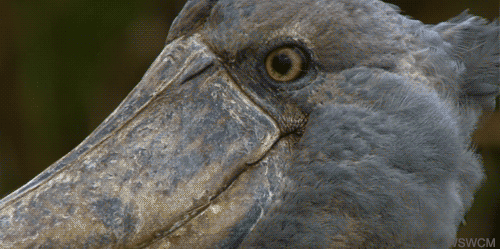
a reply to: nugget1
It's not just deep sea fish that have strange teeth. Consider the Pacu. These guys eat mostly fruit and seeds and nuts. They have teeth that look human.
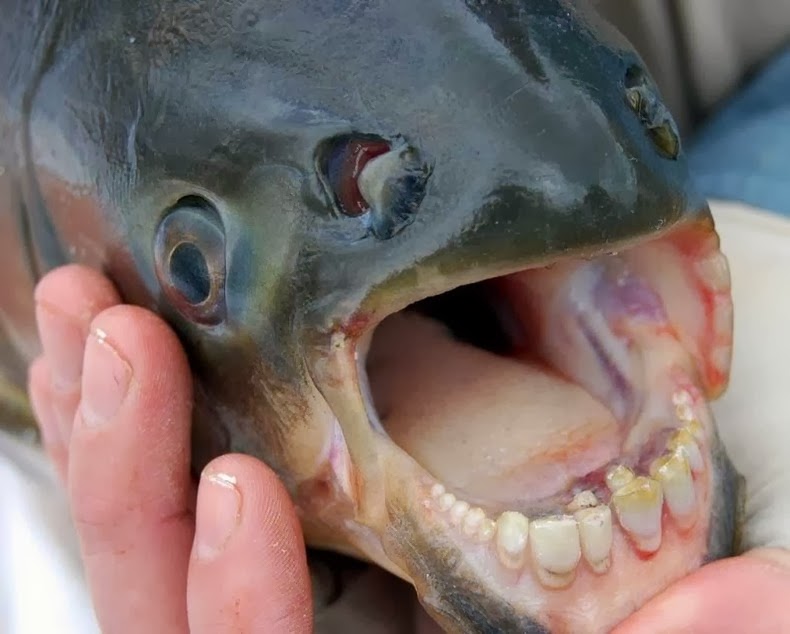
There was an episode of River Monsters where these guys somehow got introduced to a lake in Asia and they started chomping on people.
These are, btw, the same cute little you see for sale at every single pet store. Don't buy them! They get huge.
It's not just deep sea fish that have strange teeth. Consider the Pacu. These guys eat mostly fruit and seeds and nuts. They have teeth that look human.

There was an episode of River Monsters where these guys somehow got introduced to a lake in Asia and they started chomping on people.
These are, btw, the same cute little you see for sale at every single pet store. Don't buy them! They get huge.
edit on 15-1-2022 by ketsuko
because: (no reason given)
a reply to: ByteChanger
The coolest thing about those guys is when the expel the excess salt by snorting it out their nose.
The coolest thing about those guys is when the expel the excess salt by snorting it out their nose.
a reply to: LoneCloudHopper2
Thanks, those are some weird and wonderful creatures. I knew some of them, others are new; there's so much variety!
It's as if Mother Nature has gone crazy with Photoshop!
Thanks, those are some weird and wonderful creatures. I knew some of them, others are new; there's so much variety!
It's as if Mother Nature has gone crazy with Photoshop!
a reply to: ByteChanger
A lot of people on Instagram are calling him Godzilla. I think it's one of the most awesome discoveries here.
A lot of people on Instagram are calling him Godzilla. I think it's one of the most awesome discoveries here.
new topics
-
Pentagon announces new military aid package for Ukraine
World War Three: 1 hours ago -
CNN now has a pay wall
Other Current Events: 1 hours ago -
Tucker Carlson Shares Amazing Story: "I Was Mauled By a Demon"
Paranormal Studies: 2 hours ago -
Maetaquest 3S
Video Games: 4 hours ago -
Final jobs report before Nov 5th is a bad one lowest since Dec 2020
US Political Madness: 4 hours ago -
Early voting results
2024 Elections: 7 hours ago
top topics
-
Final jobs report before Nov 5th is a bad one lowest since Dec 2020
US Political Madness: 4 hours ago, 14 flags -
Candidate Harris Supporter MARK CUBAN Says Trump Has No Smart-Intelligent Women in His Orbit.
2024 Elections: 17 hours ago, 11 flags -
President BIDEN Approved Omitting from the Transcript That He Called Trump Supporters GARBAGE.
2024 Elections: 14 hours ago, 11 flags -
Early voting results
2024 Elections: 7 hours ago, 8 flags -
Tucker Carlson Shares Amazing Story: "I Was Mauled By a Demon"
Paranormal Studies: 2 hours ago, 8 flags -
CNN now has a pay wall
Other Current Events: 1 hours ago, 8 flags -
Pentagon announces new military aid package for Ukraine
World War Three: 1 hours ago, 7 flags -
Project Redsun: NASA's Secret Manned Missions to Mars The Why Files
Space Exploration: 13 hours ago, 4 flags -
Strong and Intelligent women
2024 Elections: 16 hours ago, 4 flags -
Maetaquest 3S
Video Games: 4 hours ago, 3 flags
active topics
-
CNN now has a pay wall
Other Current Events • 10 • : CriticalStinker -
Candidate Harris Supporter MARK CUBAN Says Trump Has No Smart-Intelligent Women in His Orbit.
2024 Elections • 70 • : WeMustCare -
-@TH3WH17ERABB17- -Q- ---TIME TO SHOW THE WORLD--- -Part- --44--
Dissecting Disinformation • 3069 • : Thoughtful3 -
Final jobs report before Nov 5th is a bad one lowest since Dec 2020
US Political Madness • 18 • : JadedGhost -
Tucker Carlson Shares Amazing Story: "I Was Mauled By a Demon"
Paranormal Studies • 18 • : WeMustCare -
Pentagon announces new military aid package for Ukraine
World War Three • 6 • : marg6043 -
Betting markets have Trump by a good bit
2024 Elections • 84 • : matafuchs -
Tommy Robinson jailed again.
Mainstream News • 88 • : gortex -
Early voting results
2024 Elections • 12 • : Vermilion -
British Man Jailed for over 2 Years for Shouting at Police During Protest has Died in Prison
Social Issues and Civil Unrest • 18 • : NoCorruptionAllowed

